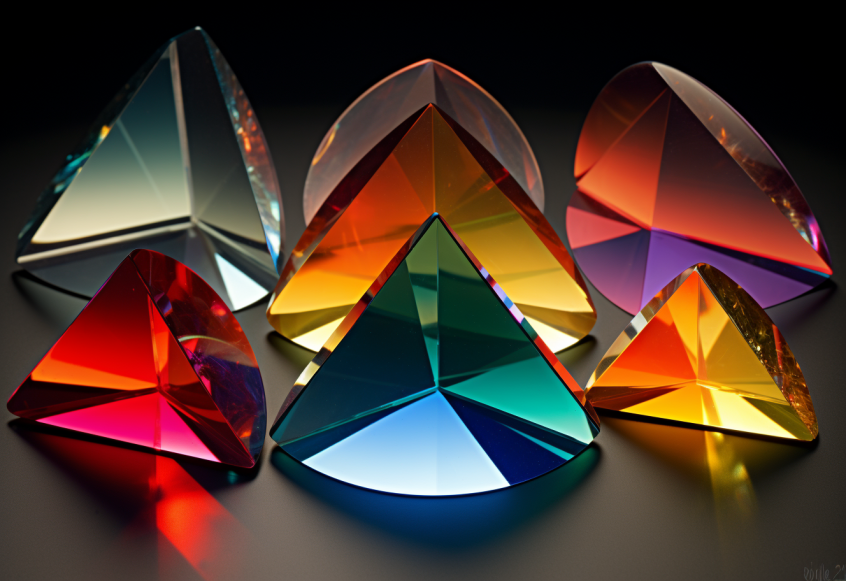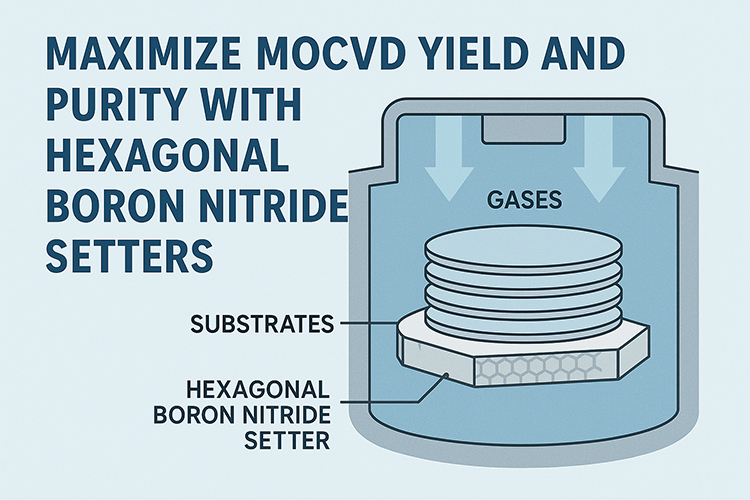Potentials of Hexagonal Boron Nitride in Photonic Device Applications

Introduction
In the world of photonics, the pursuit of materials that can push the boundaries of optical technology is unceasing. Among these materials, hexagonal boron nitride (h-BN) has emerged as a prized gem, thanks to its unique properties. This article discusses the extraordinary capabilities of h-BN and its role in shaping the future of photonic devices.
Figure 1. Hexagonal Boron Nitride
Deciphering Hexagonal Boron Nitride
Hexagonal boron nitride (h-BN) is a key member of the boron nitride family. It consists of layers of boron and nitrogen atoms arranged in a hexagonal pattern. This layered structure gives h-BN its two-dimensional characteristics.
Beyond its layered structure, h-BN boasts a repertoire of exceptional traits. These include remarkable electrical insulation properties, exceptional thermal stability, a wide bandgap, a high refractive index, a lubricious nature, and biocompatibility. These features collectively make it used in various applications, such as in the realm of electronics as an insulator.
Why Is Hexagonal Boron Nitride Preferred for Photonic Devices?
When it comes to optical devices, h-BN takes center stage due to its transparency, refractive prowess, and electrical insulation. Here's why h-BN is the preferred choice in crafting the future of optical technologies:
--Exceptional Insulator
H-BN's standout feature is its remarkable electrical insulation, thanks to its wide bandgap. In photonics, where precision light control is the Holy Grail, this trait is priceless. It enables h-BN to insulate and guide light without electrical interference, resulting in minimal signal loss and superior device performance.
--Transparency and High Refractive Index
H-BN is transparent in the visible and infrared spectrum, allowing light to pass through with minimal absorption. Its high refractive index means that it can bend light at sharper angles, facilitating the design of compact and efficient photonic devices. This makes h-BN an ideal candidate for optical components, waveguides, and lenses.
--Thermal Stability
In photonics, thermal stability is a critical requirement, particularly for devices that operate at high power levels. H-BN excels in this aspect, with an impressive thermal conductivity that can dissipate heat effectively. This property is crucial for preventing overheating in photonic devices, ensuring their reliability and longevity.
--Integration with Other Materials
H-BN's ability to play well with other materials, including semiconductors and graphene, paves the way for hybrid structures. These hybrids can be tailored for specific photonic applications, offering a high degree of versatility and customization.
How Is Hexagonal Boron Nitride Used for Photonic Devices?
Thus, h-BN's unique attributes make it an attractive choice for a range of photonic device applications:

1. Optical Modulators: H-BN's electrical insulation properties are advantageous in optical modulators, where it can manipulate the intensity and phase of light signals.
2. Waveguides: Its transparency and high refractive index make h-BN suitable for waveguides, enabling the efficient guiding of light in integrated photonic circuits.
3. Photodetectors: H-BN's sensitivity to light and electrical insulation makes it perfect for photodetectors, converting light signals into electrical currents with minimal interference.
4. Lenses and Prisms: Its refractive capabilities enhance optical devices' performance, used in the design of lenses and prisms.
5. Quantum Photonics: H-BN's suitability for hosting quantum emitters makes it a promising candidate for quantum photonic applications.
A Bright Future for Photonic Devices
As the demand for faster, more efficient, and compact photonic devices escalates, hexagonal boron nitride takes the spotlight. Its blend of electrical insulation, transparency, thermal stability, and compatibility with other materials positions it as a pivotal player in the evolution of photonic technology. Research and development continue to explore h-BN's applications in photonics, promising innovations that will redefine optical communications, sensing, and computing. In the realm of photonics, h-BN is indeed illuminating the path to a brighter, more connected future.
Advanced Ceramic Materials (ACM) stands as a prominent provider of top-quality boron nitride. There are BN rods, BN plates, BN rings, and BN nozzles available on our site. If you have inquiries concerning boron nitride or any other ceramic materials not featured on our website, please don't hesitate to reach out. We're here to assist you with your unique requirements and questions.
{{item.content}}
LEVE A REPLY
{{item.children[0].content}}
{{item.content}}
LEAVE A REPLY
SUBSCRIBE OUR NEWSLETTER
- Boron Nitride in Cosmetics: Enhancing Performance and Sensory Appeal
- Maximize MOCVD Yield and Purity with Hexagonal Boron Nitride Setters
- What Are the Advantages and Uses of Boron Nitride Ceramic Sheet?
- The Compression Annealing Advantage for Pyrolytic Boron Nitride
- Beyond Insulation: The Surprising Spectrum of Ceramic Thermal Conductivity











